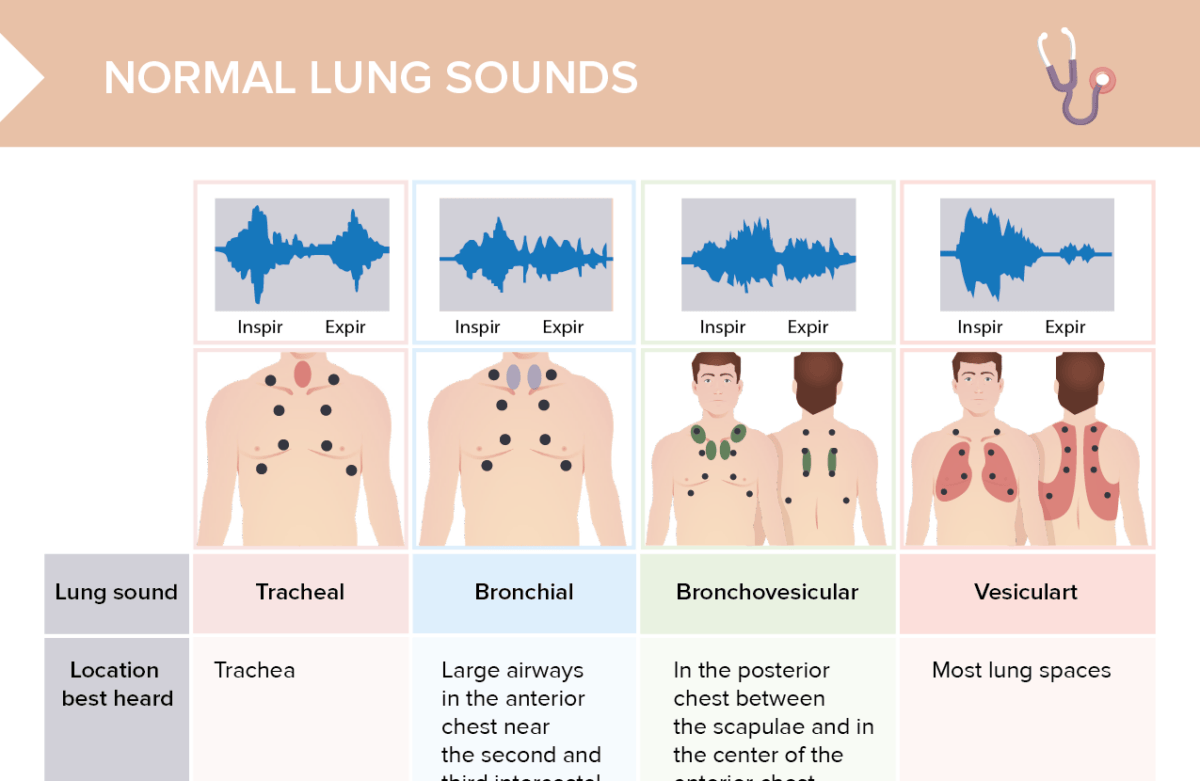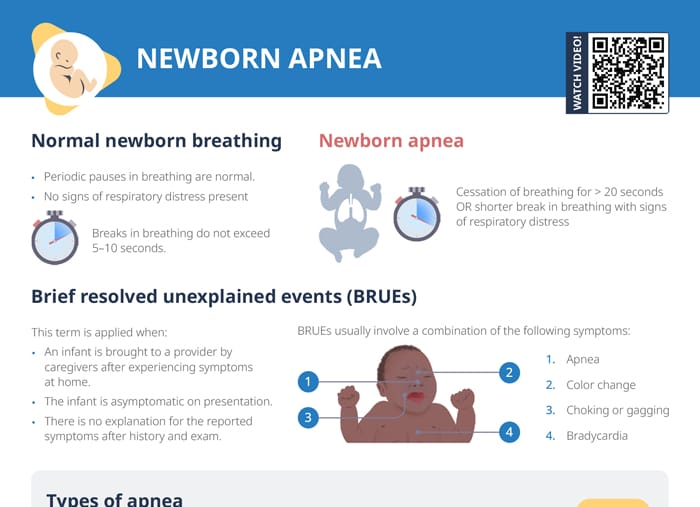What is apnea in newborns?
Normal newborn breathing
For newborns, periodic pauses in breathing are normal as long as no signs of respiratory distress are present. The pauses must not exceed 5–10 seconds.
Definition of newborn apnea
Newborn apnea is defined as a cessation of breathing for > 20 seconds, OR a shorter break in breathing with signs of respiratory distress.
What is BRUE?
The medical abbreviation “BRUE” stands for “Brief Resolved Unexplained Event.” BRUEs are episodes where an infant suddenly has breathing problems that have no apparent reason, are brief, and resolve on their own.
The term is applied when an infant is brought to a provider by caregivers after experiencing symptoms at home, the infant is asymptomatic on presentation, and there is no explanation for the reported symptoms after history and exam.
Symptoms of BRUEs:
- Apnea
- Color change
- Choking or gagging
- Bradycardia
Types of apnea in newborns
Central apnea
Central apnea is due to neurological causes:
- CNS infections
- Head trauma
- Birth asphyxia
- Maternal drug use
- Metabolic disorders
- Prematurity
Prematurity is the most common cause.
Obstructive apnea
Obstructive apnea is due to physical blockages of the airways, due to airway infections or congenital anomalies.
Mixed apnea
Mixed apnea is defined as a combination of central and obstructive apnea and is the most common type of apnea in premature infants.
Treatment of newborn apnea
The primary method of treatment for newborn apnea is to fix the underlying cause of the apnea. Further measures include supplemental oxygen, breathing assistance, medications (e.g., caffeine), or surgical interventions.
Nursing tips and patient education around newborn apnea and BRUEs
- Understand how to assess the risk of BRUEs. Low-risk cases often don’t require extensive testing, but high-risk cases may need further evaluation.
- Reassure worried parents by explaining that BRUEs are typically not harmful and often don’t indicate a serious problem.
- Educate parents on safe sleeping practices to minimize risks.
- Provide education on how to monitor and handle a child if another episode occurs. Instruct parents to monitor their child for any recurrence and to seek immediate medical attention if the child experiences severe or repeated episodes.
- Document the incident, parental concerns, and any advice or instructions given.

